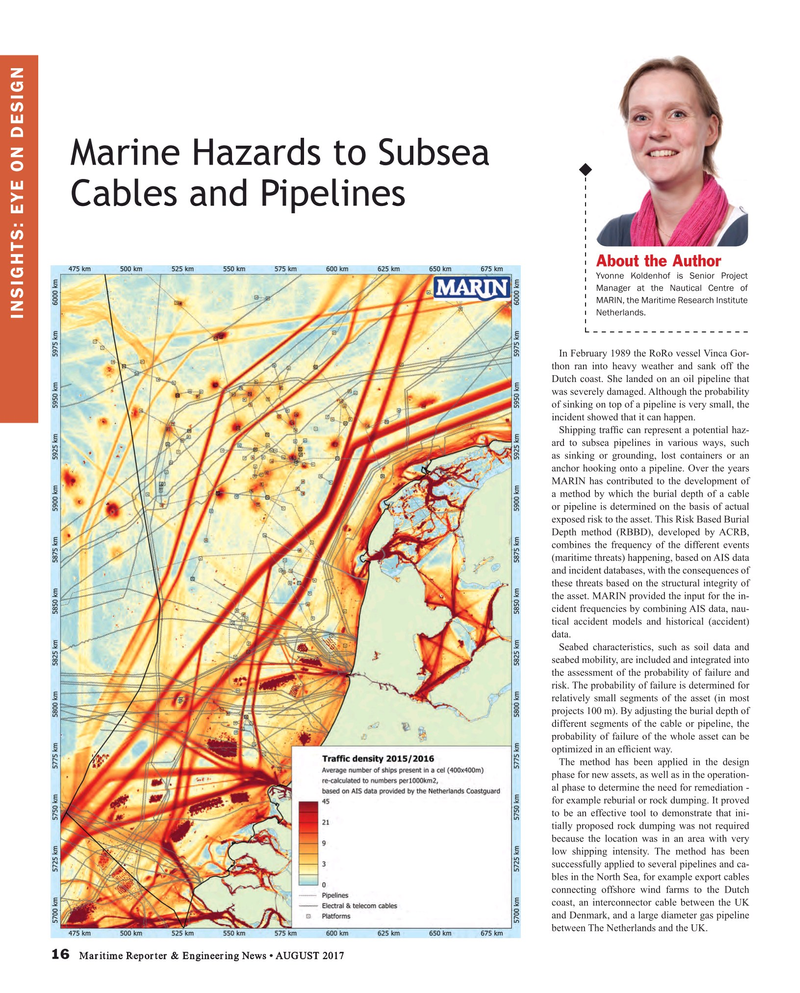
Page 16: of Maritime Reporter Magazine (August 2017)
The Shipyard Edition
Read this page in Pdf, Flash or Html5 edition of August 2017 Maritime Reporter Magazine
Marine Hazards to Subsea
Cables and Pipelines
About the Author
Yvonne Koldenhof is Senior Project
Manager at the Nautical Centre of
MARIN, the Maritime Research Institute
Netherlands.
INSIGHTS: EYE ON DESIGN
In February 1989 the RoRo vessel Vinca Gor- thon ran into heavy weather and sank off the
Dutch coast. She landed on an oil pipeline that was severely damaged. Although the probability of sinking on top of a pipeline is very small, the incident showed that it can happen.
Shipping traf? c can represent a potential haz- ard to subsea pipelines in various ways, such as sinking or grounding, lost containers or an anchor hooking onto a pipeline. Over the years
MARIN has contributed to the development of a method by which the burial depth of a cable or pipeline is determined on the basis of actual exposed risk to the asset. This Risk Based Burial
Depth method (RBBD), developed by ACRB, combines the frequency of the different events (maritime threats) happening, based on AIS data and incident databases, with the consequences of these threats based on the structural integrity of the asset. MARIN provided the input for the in- cident frequencies by combining AIS data, nau- tical accident models and historical (accident) data.
Seabed characteristics, such as soil data and seabed mobility, are included and integrated into the assessment of the probability of failure and risk. The probability of failure is determined for relatively small segments of the asset (in most projects 100 m). By adjusting the burial depth of different segments of the cable or pipeline, the probability of failure of the whole asset can be optimized in an ef? cient way.
The method has been applied in the design phase for new assets, as well as in the operation- al phase to determine the need for remediation - for example reburial or rock dumping. It proved to be an effective tool to demonstrate that ini- tially proposed rock dumping was not required because the location was in an area with very low shipping intensity. The method has been successfully applied to several pipelines and ca- bles in the North Sea, for example export cables connecting offshore wind farms to the Dutch coast, an interconnector cable between the UK and Denmark, and a large diameter gas pipeline between The Netherlands and the UK.
16 Maritime Reporter & Engineering News • AUGUST 2017
MR #8 (10-17).indd 16 MR #8 (10-17).indd 16 8/4/2017 10:28:08 AM8/4/2017 10:28:08 AM

 15
15

 17
17
